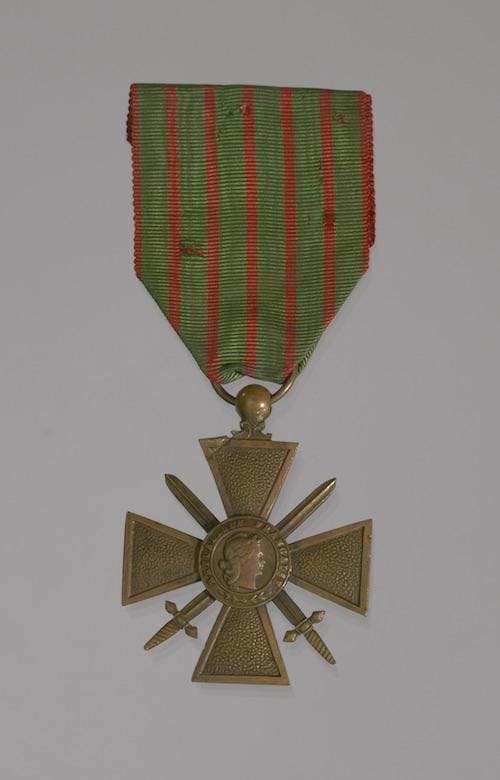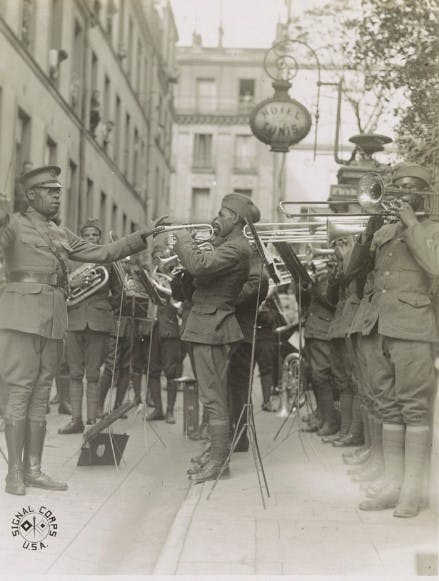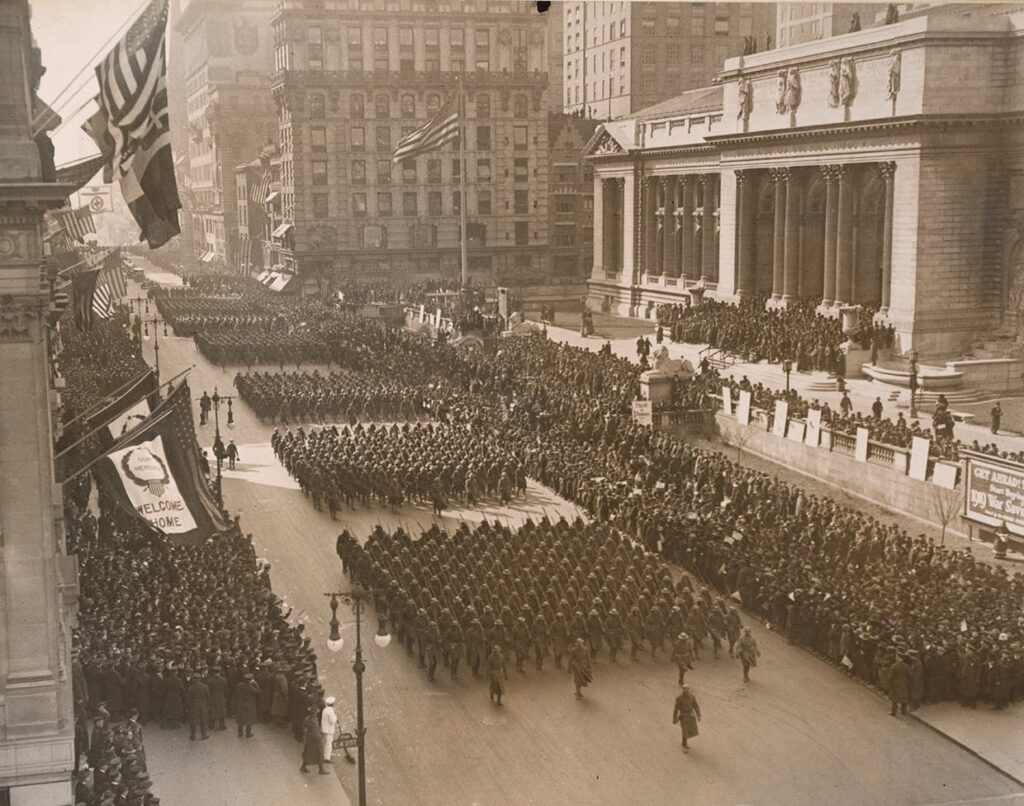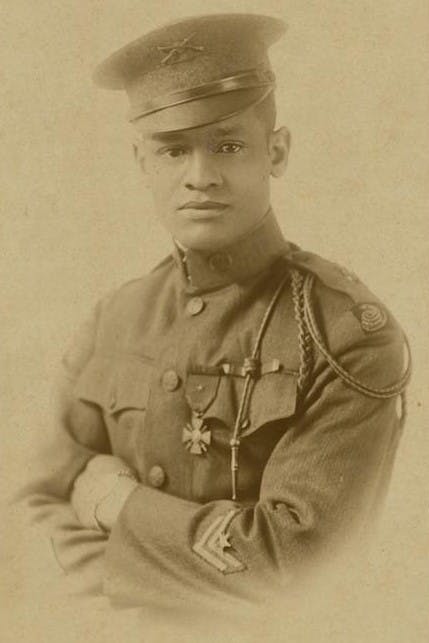UNSUNG HEROES FINALLY GETTING THEIR DUE
In the annals of American military history, few units have left a more indelible mark than the 369th Infantry Regiment, better known as the “Harlem Hellfighters.” Formed in 1916 as the 15th New York Infantry, this predominantly African American and Puerto Rican unit from Harlem faced countless obstacles and discrimination, yet they proved their mettle on the battlefields of World War I, earning the respect and admiration of allies and enemies alike.
![Members of the 369th [African American] Infantry National Archives Catalog](https://factbrainiac.com/wp-content/uploads/2024/03/Members-of-the-369th-African-American-Infantry-National-Archives-Catalog.jpg)
THE BIRTH OF THE HARLEM HELLFIGHTERS
The story of the Harlem Hellfighters began in 1916 when prominent Harlem leaders pressured New York Governor Charles Whitman to authorize the creation of an all-black combat unit. Despite facing extensive obstacles, Governor Whitman finally agreed, and the 15th New York Infantry was born.
To lead this groundbreaking regiment, Governor Whitman handpicked white officer William Hayward. Recognizing the challenges ahead, Hayward wisely enlisted the help of African American leaders, including the famed bandleader James Reese Europe, to help bridge the gap between the white officers and the black soldiers.
CONFRONTING RACISM BEFORE COMBAT
Before the Harlem Hellfighters could prove themselves on the battlefield, they first had to confront the ugly realities of racism and discrimination at home. As the unit began training in the Jim Crow South, tensions quickly escalated, threatening to boil over into violence.
It was here that the leadership of William Hayward and James Reese Europe proved invaluable. Through their courage, compassion, and unwavering commitment to their men, they managed to keep the peace and maintain unit cohesion, even in the face of blatant racism and provocation.
For the soldiers of the 369th, the fight for equality was not just a matter of principle; it was a matter of survival. They knew that their performance on the battlefield would be scrutinized and judged, not just by their enemies, but by their own countrymen. They understood that their success or failure could have far-reaching implications for the future of African Americans in the United States.
HEROES IN FRENCH TRENCHES
When the Harlem Hellfighters finally arrived in Europe in 1918, they quickly proved their worth on the battlefield. Despite initially being relegated to menial tasks by American generals, the unit soon caught the attention of French commanders, who recognized their skills and bravery.
Under French command, the Harlem Hellfighters became known as the “Hellfighters” for their unwavering courage and refusal to surrender ground under constant shelling. They spent more days in combat than any other American unit, earning an incredible 171 individual Croix de Guerre medals for bravery under fire.
One of the most famous stories of the Harlem Hellfighters’ bravery occurred on a night in May 1918, when Privates Henry Johnson and Needham Roberts single-handedly fought off a German ambush while on sentry duty. Despite being outnumbered and outgunned, Johnson and Roberts managed to kill or wound more than a dozen German soldiers, earning them widespread acclaim and cementing the Harlem Hellfighters’ reputation as a force to be reckoned with.

Collection of the Smithsonian National Museum of African American History and Culture.
JAZZING UP THE WESTERN FRONT
But the Harlem Hellfighters’ impact on World War I extended far beyond the battlefield. Thanks to the foresight of Colonel Hayward and the musical genius of James Reese Europe, the regiment became known for its incredible musical talents, which helped to boost morale and bridge cultural divides.
Europe’s band, which included some of the most talented musicians of the era, wowed audiences across Europe with their innovative jazz arrangements and infectious energy. They played for wounded soldiers in hospitals, entertained troops in the trenches, and even performed for top military brass and dignitaries.

Through their music, the Harlem Hellfighters helped to introduce jazz to a wider European audience, laying the groundwork for the cultural revolution that would sweep the continent in the years to come. They showed that African American culture was not only vibrant and dynamic but also had the power to transcend racial and national boundaries.
BITTERSWEET HOMECOMING
Despite their incredible accomplishments on the battlefield and their cultural impact abroad, the Harlem Hellfighters returned home to a nation still deeply divided by race. While they were greeted with a massive parade in New York City, the celebrations quickly faded, and the soldiers found themselves once again confronting the harsh realities of racism and discrimination.
Many of the Harlem Hellfighters, including Henry Johnson, struggled to find work and support themselves in the years following the war. Johnson himself died in poverty in 1929, his incredible bravery and sacrifice largely forgotten by the nation he had served so faithfully.

It wasn’t until decades later that the Harlem Hellfighters began to receive the recognition they so richly deserved. In 2015, President Barack Obama posthumously awarded the Medal of Honor to Henry Johnson, acknowledging his incredible bravery and sacrifice on the battlefield.
Today, the legacy of the Harlem Hellfighters lives on, not just in the annals of military history, but in the hearts and minds of all those who believe in the power of courage, sacrifice, and the unbreakable human spirit. Their story reminds us that even in the face of incredible adversity, we have the power to rise above, to fight for what is right, and to make a lasting impact on the world around us.

THE ENDURING LEGACY OF THE HARLEM HELLFIGHTERS
The story of the Harlem Hellfighters is not just a tale of military heroism; it is a powerful reminder of the ongoing struggle for racial justice and equality in America. The soldiers of the 369th Infantry Regiment fought not just for their country, but for the right to be treated as equals, to be judged not by the color of their skin, but by the content of their character and the strength of their actions.
In many ways, the Harlem Hellfighters were ahead of their time. They embodied the spirit of the civil rights movement decades before it would sweep the nation, and their courage and determination in the face of adversity set an example for generations to come.
Today, as America continues to grapple with issues of race and inequality, the legacy of the Harlem Hellfighters takes on new meaning and urgency. Their story reminds us that progress is possible, that change can happen, but that it requires the tireless efforts and sacrifices of those who are willing to stand up and fight for what is right.
It is up to us to carry on the legacy of the Harlem Hellfighters, to honor their memory by continuing the fight for justice and equality in our own time. We must recognize that the battle is not yet won, that there is still much work to be done to create a society that truly lives up to the ideals of freedom, justice, and opportunity for all.

STIRRING MODERN RECOGNITION
But as we look to the future, we can draw strength and inspiration from the example of the Harlem Hellfighters. We can remember their courage, their sacrifice, and their unwavering commitment to justice, and we can use their story as a beacon of hope and a call to action in our own lives.
In the end, the legacy of the Harlem Hellfighters is not just a matter of history; it is a living, breathing testament to the power of the human spirit to overcome even the greatest of odds. It is a reminder that no matter how dark the night may seem, there is always the promise of a brighter dawn ahead, if only we have the courage to keep fighting for it.

ABMC photo
So let us honor the memory of the Harlem Hellfighters by picking up the torch they so bravely carried, and by continuing the march towards a more just, more equal, and more perfect union. Let us remember that their fight is our fight, and that their legacy is our legacy, a shining example of what is possible when we stand together, united in our commitment to justice and freedom for all.



